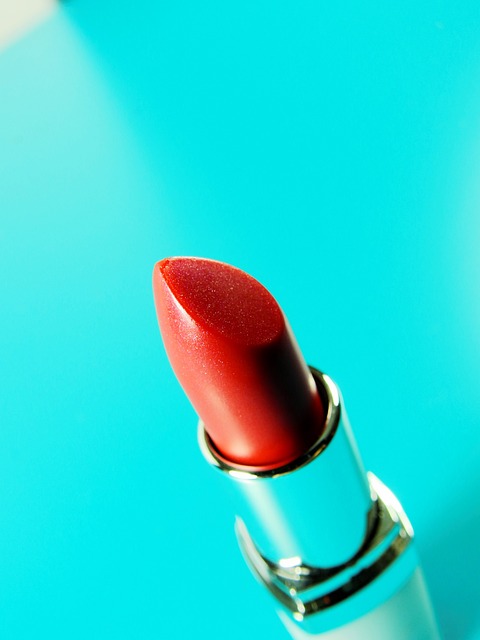Lipstick isn't just about color—it's a blend of waxes, oils, pigments, and additives that offers structure, moisture, and nourishment. BFF (beauty-friendly) lipsticks, known for their natural and safe formulations, prioritize comfort and safety by avoiding potentially harmful allergens and chemicals. These products combine strategic ingredients like candelilla wax, emollients, and antioxidants to enhance performance and longevity while appealing to consumers demanding transparency and ethical standards in the beauty industry. By opting for BFF lipsticks, users can enjoy vibrant colors naturally sourced, along with formulas that cater to sensitive skin and overall well-being.
“Unveiling the secrets behind your favorite beauty staple, this article takes a comprehensive look at the chemicals in lipstick. From understanding the intricate composition to exploring the role of various ingredients, we demystify how these substances contribute to your desired lipstick properties.
We also delve into safety considerations, evaluating potential health risks and offering insights on natural alternatives gaining popularity as BFF lipstick options for those seeking safer choices.”
- Understanding the Composition of Lipstick: A Closer Look at Ingredients
- The Role of Chemicals in Achieving Desired Lipstick Properties
- Safety Considerations: Evaluating Potential Health Risks of Chemical Components
- Natural Alternatives and Their Rise in Popularity: BFF Lipstick Options
Understanding the Composition of Lipstick: A Closer Look at Ingredients

Lipstick, a beloved beauty staple for many, is more than just a vibrant hue; it’s a carefully crafted combination of various ingredients designed to enhance and protect your lips. Understanding the composition of lipstick allows us to make informed choices, especially when considering options like BFF lipstick, which promises natural and safe formulations.
The average lipstick contains a blend of waxes, oils, pigments, and various additives for texture, scent, and preservation. Wax provides structure and helps the lipstick glide on smoothly, while oils add moisture and prevent dryness. Pigments create the desired color, ranging from subtle nudges to bold, vibrant shades. Some lipsticks also include antioxidants, vitamins, and other nutrients to nourish and condition the lips. By examining the ingredient list, consumers can identify potential allergens, heavy metals, or controversial chemicals, ensuring a safe and comfortable experience for all skin types.
The Role of Chemicals in Achieving Desired Lipstick Properties

Lipstick, a beloved beauty staple for many, is more than just a vibrant hue; it’s a carefully crafted blend of various chemicals that contribute to its unique properties. These essential components play a pivotal role in creating the perfect bff lipstick—one that glides on smoothly, offers long-lasting color, and enhances the natural beauty of lips. From waxes to pigments and emollients, each chemical has a specific function. Waxes, such as candelilla and carnauba, provide structure and help prevent smudging, ensuring the lipstick remains intact for hours. Pigments offer the desired color, with a range of options from natural minerals to synthetic dyes, allowing for vibrant and diverse shades.
Emollients like beeswax or lanolin add moisture and softness to the formula, making the lipstick more comfortable on the skin. They also aid in creating a smooth texture, ensuring an even application. Additionally, preservatives are often included to extend the product’s shelf life and maintain its integrity over time. The careful selection and combination of these chemicals enable cosmetic brands to create bff lipsticks that meet the high demands of consumers, offering both quality and performance.
Safety Considerations: Evaluating Potential Health Risks of Chemical Components

When it comes to beauty products like bff lipstick, understanding the safety considerations and potential health risks associated with its chemical components is essential. While many brands prioritize using safe, non-toxic ingredients, some lipsticks may still contain questionable substances. It’s crucial to evaluate these chemicals to ensure they meet safety standards and won’t cause adverse reactions when applied to sensitive skin.
One common concern revolves around the presence of heavy metals, parabens, and synthetic fragrances, which have been linked to various health issues. These ingredients can potentially leach into the body through topical application, especially in products that are frequently used like lipsticks. Therefore, it’s important for consumers to opt for brands that disclose their ingredient lists transparently and prioritize using natural alternatives whenever possible.
Natural Alternatives and Their Rise in Popularity: BFF Lipstick Options

The beauty industry has witnessed a growing trend towards natural and organic cosmetic alternatives, including BFF (beauty-friendly) lipsticks that prioritize safety and sustainability. This shift is partly driven by consumers’ increasing awareness of the potential health risks associated with certain synthetic chemicals commonly found in traditional lipstick formulations. As a result, many brands are now offering cruelty-free, vegan options made from plant-based ingredients, essential oils, and mineral pigments.
These natural BFF lipsticks provide a wide range of benefits, from nourishing and moisturizing formulas that enhance lips’ health to vibrant colors derived from natural sources. The rising popularity of these products reflects a changing consumer preference for transparency in ingredient lists and a desire for cosmetics that not only enhance beauty but also contribute to overall well-being without compromising ethical standards.
Lipstick has evolved from its historical roots to a modern beauty staple, with an intricate blend of chemicals contributing to its diverse properties. While traditional formulations offer a range of benefits, growing consumer awareness of potential health risks has sparked interest in natural alternatives. BFF (better for you) lipsticks, free from harsh chemicals, are gaining popularity as consumers seek safer, more sustainable options without compromising on quality or style. Understanding the ingredients in our beauty products is key to making informed choices that align with our values and well-being.
